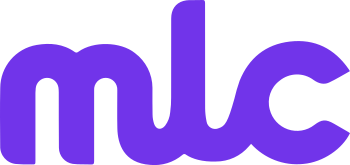What is Digital Therapeutics?
The first mention of digital therapeutics is in a paper published in 2015 by Sepah et al. According to the paper, the term is defined as the “evidence-based behavioural treatment” delivered online to improve accessibility and boost the quality of health care given to patients.
The Digital Therapeutics Alliance state there are various types of products or services in the field of digital therapeutics. These products or services employ digital health technologies to ensure that best practices are observed in the delivery of health services to treat patients and produce better health outcomes.
 The first technology-mediated concept of digital therapeutics was developed by Dr. Joseph Kvedar in 1995. The initial purpose of delivering digital solutions and therapeutic interventions outside of conventional setups, like hospitals and clinics, was to overcome the restrictions of time, place, and other personal limitations in providing care for health patients and for various health conditions. The initial concept by Dr. Kvedar served as the foundation for future development and digital health formularies that developed later.
The first technology-mediated concept of digital therapeutics was developed by Dr. Joseph Kvedar in 1995. The initial purpose of delivering digital solutions and therapeutic interventions outside of conventional setups, like hospitals and clinics, was to overcome the restrictions of time, place, and other personal limitations in providing care for health patients and for various health conditions. The initial concept by Dr. Kvedar served as the foundation for future development and digital health formularies that developed later.
It was in 1999 when Dr. Tom Ferguson coined the term “e-health” to refer to the use of digital solutions, or digital treatments. Specifically, he referred to the use of digital technology to enable and empower health decisions to treat patients and ensure health and care excellence. He pointed out that this approach to delivering health care involves patients in the decision-making process more than it did so in the past.
How is Digital Therapeutics Transforming Global Healthcare?
Modern healthcare has significantly transformed today with the use of digital health solutions. The field of digital therapeutics uses a combination of science, technology, and design to deliver better health outcomes for patients using artificial intelligence, connected devices, and other evidence-based therapeutic interventions.
Traditional forms of health care are met with various challenges leading to the adoption of digital therapeutics as a possible solution to these challenges. Digital therapeutics are therapeutic interventions that utilise high quality software programs to prevent, manage, diagnose, or treat patients and various health conditions.
 The adoption of digital therapeutics has grown tremendously since the approval from the Food and Drug Administration. In 2020, there was up to a 79% increase in investment in digital therapeutics. The Food and Drug Administration also revealed that the reliance on digital therapeutics will grow ten times by 2023.
The adoption of digital therapeutics has grown tremendously since the approval from the Food and Drug Administration. In 2020, there was up to a 79% increase in investment in digital therapeutics. The Food and Drug Administration also revealed that the reliance on digital therapeutics will grow ten times by 2023.
So, what are the different forms of digital health technologies that are employed in the current adoption of digital therapeutics? Below are a few examples of them:
- Telehealth – This type of digital therapeutic includes remote patient monitoring and communication with healthcare providers done through digital channels.
- Connected devices – The use of wearable medical devices and technologies that are capable of tracking vital signs and health data, such as blood pressure, heart rate, and oxygen levels. It can also be used for disease management such as medication adherence, diabetes care, etc.
- Mobile Health (mHealth) – This includes tools and apps that are available to make it easier for patients to manage and monitor their conditions when on the go. A few examples include wellness apps and mental health apps, fitness trackers, etc.
- Personalised Healthcare – The digital therapeutic solutions employ artificial intelligence to gather data and insights about a patient’s health condition, which produces a more personalised approach to healthcare decisions and health outcomes. Artificial intelligence is a powerful tool to support important clinical decisions.
 The above list of features available to digital therapeutics makes it possible to deliver a patient-centric approach to health care. The need for patient engagement and education is the driving force behind the major transformation that the digital therapeutics and global healthcare industry are experiencing now, and in the years to come.
The above list of features available to digital therapeutics makes it possible to deliver a patient-centric approach to health care. The need for patient engagement and education is the driving force behind the major transformation that the digital therapeutics and global healthcare industry are experiencing now, and in the years to come.
The customisation of health care services is driven by technologically-advanced digital health products or software programs. The emerging world of digital therapeutics will continue to expand in the coming years as more technological developments are underway.
Digital Therapeutics Challenges and Opportunities
The rise of digital therapeutics is not without challenges. As there is a rise in chronic diseases and conditions, there is also an increase in demand for health systems to effectively address various conditions and improve the everyday lives of patients.
It’s important to identify these challenges to digital health adoption to develop ways to overcome them and deliver more effective solutions and digital therapeutics strategies.
Challenges of Digital Therapeutics
What are the challenges facing the adoption of digital therapeutics? To ensure the faster adoption and development of the digital therapeutics field, it is important to identify and address these challenges.
Regulatory
Dealing with regulatory bodies is one of the challenges facing digital therapeutics adoption. It is vital that all clinically evaluated softwares and digital health technologies meet the standard of the FDA, NHS England, and other regulatory bodies in the European Union and other regions. The existing regulations help define a standard with which all digital therapeutics and technologies must live up to ensure the delivery of improved health outcomes for patients.
While the intent is good with the regulation of digital therapeutic, it can slow down the development, production or manufacture, and the release of digital health technologies into the market. The lengthy legislation and approval process also slow down the penetration into new markets, which negates the rapid innovation and development of new technologies.
 Adoption
Adoption
Healthcare providers are trained and by nature skeptical if new treatments arise. They want to validate them for effectiveness before they choose to adopt them. Specifically, experts require clinical evidence and research-backed studies before they choose to adopt a new treatment approach, whether it is for chronic diseases, mental health disorders, and so on.
This same mindset applies when it comes to digital therapeutics. This leads to a wide range of issues due to the lack of clinical evidence to support how effective digital therapeutics is since it is mostly in its infancy. Skepticism is high at this early stage of adoption of digital health innovation and digital therapeutics.
The decisions from the healthcare providers control a large portion of the current healthcare costs. Some healthcare providers might refuse to adopt software development of digital therapeutics and insist on using a traditional pharmaceutical approach to healthcare and treatment. Therefore, it limits the adoption of digital therapeutics. The added challenge to this is that many providers are not interested in investing the time and effort to learn how to use digital therapeutics and AI-driven medical devices. Most are not willing to allocate the time to learn and to overcome the risks associated with the new technologies, despite the clinical trials and evidence based treatments.
 Language and Localisation
Language and Localisation
The target for the adoption of digital therapeutics is on a global scale. This is why it’s important for the Dtx market to reach not only the developing countries, but also various regions in the world. However, cultural nuances and language differences can serve as one of the biggest barriers to digital therapeutics.
Language issues and localisation have been a nagging issue in the healthcare industry. As more clinical trials and health innovations are coming from other parts of the world outside of the US and the UK, the culture and language differences can limit its adoption and spread to other health systems.
The clarity of language usage and at the right cultural context is vital in ensuring that healthcare providers completely understand how to use the digital products. At the same time, they should be able to provide accurate explanation to the patients about the activity and why there is a need for certain tools and products as part of the treatment process.
The communication barrier between the provider and patients is the most common culprit for low quality healthcare, especially as it is directly related to patient and clinician having good communication. When there is good communication and proper use of language, it is possible to achieve better health outcomes. It is important to address this challenge in digital therapeutics by addressing cultural differences, language differences, and low health literacy among patients.
 Penetrating New Markets
Penetrating New Markets
It’s also vital to address the above language issues if digital therapeutics products are to penetrate into the market. The best way to overcome this hurdle is to address the key challenges facing digital therapeutics in its aim to reach a wider market:
- Focus on user-centric solutions. It is true with many health products. It’s crucial that you design a product that would fit into the needs of users so they will be engaged in it for a long time.
- Make advocates out of providers. It’s important for providers to be on board with the adoption of digital therapeutics as they will serve as the primary point of contact with patients. After all, patients look to their providers as the authority in making treatment decisions (particularly in chronic diseases).
- Develop a new market model. Adopt a commercial mindset in developing Dtx solutions and products. Develop a model that will set up a new standard in the particular area of the healthcare industry. Tech integration demands a new skill set and roles. Make sure you are smart about understanding the parameters of the Dtx market and designing your product accordingly.
- Expanding payer coverage. Most insurance companies do not cover the cost of digital therapeutics, which is often the case of new treatments or medical devices due to a lack of adequate trial results. As a result, the reimbursement of digital therapeutics has lagged. With the announcement of new digital health formularies, hopefully this will change soon.
Opportunities for Digital Therapeutics
Technology has transformed the landscape of healthcare delivery. Digital therapeutics are the best example of this. However, Dtx is only in its early stages and there are more opportunities waiting to be explored. It’s important that you learn to adapt by delivering value and convenience to patients (consumers).
Convering Provider, Patients, and Payer
Providers are seeing the benefits offered by digital therapeutics in improving treatment and disease management. The access to clinical analytics and data enhance their clinical decision-making process.
Meanwhile, patients feel empowered with the use of digital health tools. And empowered patients take on a more active role in their treatment and disease management over those who are not as informed or empowered.
The final component of this is the involvement of payers, or health insurance companies. They are the final link in the expansion of digital therapeutics access because a wide acceptance of them among health insurance providers mean more access to digital health tools and opportunities.
Improved Disease Management
The primary advantage of digital therapeutics adoption is in the wide scope of health conditions and diseases that can be managed. According to the Digital Therapeutics Alliance, some of the common conditions addressed by digital therapeutics include, but are not limited to, the following:
- Mental Health – Digital therapeutics is more than just the mental health apps and wellness apps. It is about the cognitive behavioural therapy and using advanced technologies to facilitate the treatment of depression, anxiety, and other similar disorders.
- Diabetes – Diabetes is one of the most common conditions affecting millions of people globally. The implementation of digital therapeutics in the management of diabetes using high-quality software programs and a mobile medical device increase patient adherence to recommended treatment plans.
- Alzheimer’s Disease – There are many trial results that showcase the benefits of using digital therapeutics in the treatment and management of Alzheimer’s disease symptoms.
 The evidence based therapeutic behavioural treatments and health solutions offered by digital therapeutics enable providers to look at new treatments rather than being limited to traditional medicine.
The evidence based therapeutic behavioural treatments and health solutions offered by digital therapeutics enable providers to look at new treatments rather than being limited to traditional medicine.
Tech and Pharma Collaborations
The integration of technologies with pharmaceutical companies is among the top opportunities available for the digital therapetic industry. Pharmaceutical companies have already made considerable resource allocations in this area. Continued exploration of this opportunity can significantly improve current drug therapy approaches.
The Bottom Line
The emerging world of digital therapeutics opens up endless possibilities in the development of a more effective treatment plan for all diseases, whether for mental health disorders or opioid use disorder. Dtx solutions enable faster data collection of patient records and medical history, which in turn ensure accuracy of diagnosis and treatment plans.
 As technology continues to evolve, one can expect more Dtx products to hit the market to treat various conditions in a more cost-effective manner than traditional medicine. The Dtx market will increase accessibility to health services as digital therapeutics will enable patients to manage diseases remotely, use digital products specifically addressed for their health conditions, and leveraging a wide range of technologies for more powerful and effective treatment options. Digital therapeutics are the future of healthcare. The sooner you can embrace Dtx products and maximise their capabilities, the more patients will get the treatment they deserve.
As technology continues to evolve, one can expect more Dtx products to hit the market to treat various conditions in a more cost-effective manner than traditional medicine. The Dtx market will increase accessibility to health services as digital therapeutics will enable patients to manage diseases remotely, use digital products specifically addressed for their health conditions, and leveraging a wide range of technologies for more powerful and effective treatment options. Digital therapeutics are the future of healthcare. The sooner you can embrace Dtx products and maximise their capabilities, the more patients will get the treatment they deserve.
On the other hand, success with digital therapeutics Dtx is not guaranteed. There is even the possibility that it will not reach its full potential. But the current goal of digital therapeutics is to bridge the gap in delivering patient care, such as to increase accessibility and implement the core principles that make digital therapeutics adoption a success.
My Language Connection is an expert language service provider specialising in medical and healthcare translations. Get in touch today to arrange a quote.

